Warren Buffett is more than just a household name; he’s a living legend in the world of finance. Recognized as one of the wealthiest individuals globally, his net worth often exceeds $100 billion, placing him consistently among the top three richest people on the planet. Buffett’s fortune isn’t the result of a tech startup or inheritance—it’s the product of savvy investing and shrewd business acquisitions over decades. Despite his immense wealth, he is known for his humble lifestyle, still residing in the Omaha home he purchased in 1958. His journey from a young, enterprising boy to a titan of industry is both fascinating and inspiring.
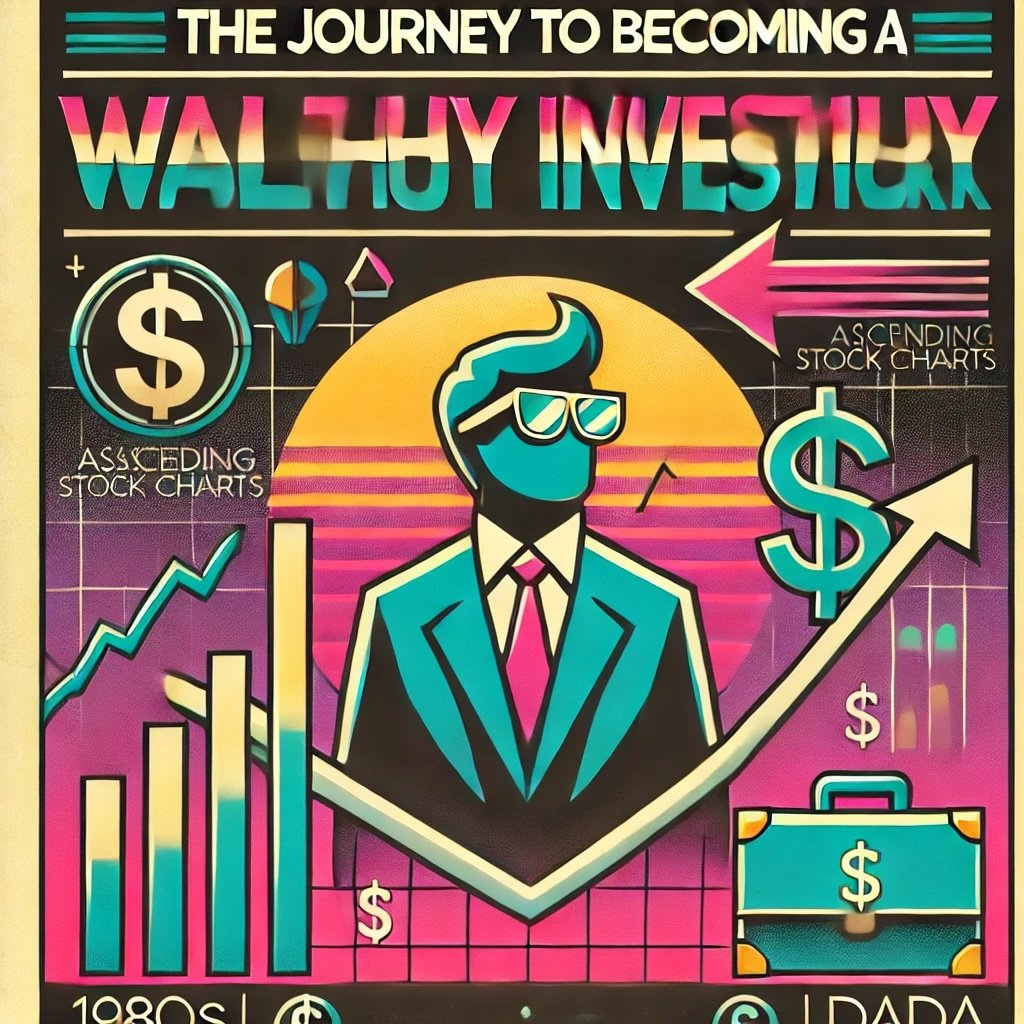
- Net Worth: Surpasses $100 billion, making him one of the richest people worldwide.
- Frugal Living: Lives modestly, emphasizing value over extravagance.
- Influential Figure: His investment moves are closely watched by investors globally.
Tip: Understanding Buffett’s humble beginnings and frugal nature can inspire you to value long-term gains over short-term indulgences.
Nicknamed the “Oracle of Omaha” for his exceptional investment prowess, Buffett has an uncanny ability to predict market trends and make profitable decisions. This moniker reflects not just his hometown pride but also his reputation for wisdom and foresight in investing. His strategies often defy conventional market behaviors, yet they yield remarkable results. Investors and financial analysts eagerly anticipate his annual letters to shareholders for insights and guidance. Buffett’s influence is so profound that his investment choices can sway market confidence and inspire trends.
- Market Predictor: Known for anticipating market movements with impressive accuracy.
- Educational Contributions: His shareholder letters are considered must-reads in finance.
- Market Influence: His decisions can impact global markets and investor sentiments.
Tip: Studying Buffett’s investment approaches can provide valuable lessons in thinking independently and strategically.
![]()
Overview of Warren Buffett’s Status as a Leading Investor
We’ll explore the journey and strategies that propelled Warren Buffett to the pinnacle of investment success. We’ll delve into his early life, uncovering how his childhood ventures laid the groundwork for his future empire. By examining the key decisions and philosophies that shaped his career, we’ll reveal the principles that can be applied by investors at any level. From his adherence to value investing to his disciplined approach, we’ll highlight the factors that contributed to his extraordinary wealth.
- Early Ventures: Insights into how his childhood businesses influenced his mindset.
- Investment Philosophy: Understanding the core principles he lives by.
- Key Decisions: Analyzing pivotal moments that defined his career trajectory.
Tip: Learning about Buffett’s journey can motivate you to identify and develop your own guiding investment principles.
Our goal is not just to tell Buffett’s story but also to offer insights for aspiring investors. We’ll break down his strategies into actionable advice that you can implement in your own investment journey. Whether you’re a novice looking to enter the market or an experienced investor seeking to refine your approach, there’s something here for you. By understanding how Buffett navigated challenges and capitalized on opportunities, you can glean valuable lessons to enhance your financial decisions. We aim to empower you with knowledge that transcends mere facts and figures.
- Actionable Advice: Practical tips derived from Buffett’s strategies.
- Investor Empowerment: Encouraging informed and confident investment choices.
- Adaptable Strategies: How to tailor his principles to modern market conditions.
Tip: Applying proven strategies from successful investors like Buffett can increase your chances of achieving long-term financial success.
![]()
Early Life and Beginnings
Childhood and Early Interest in Business
Born on August 30, 1930, in Omaha, Nebraska, Warren Buffett displayed an entrepreneurial spirit from a young age. He was the second of three children and the only son of Howard and Leila Buffett. Fascinated by numbers and money, he reportedly could add large columns of numbers in his head as a child. At just six years old, he purchased six-packs of Coca-Cola from his grandfather’s grocery store for 25 cents and sold each bottle for a nickel, making a five-cent profit per pack. By the time he was a teenager, he was running multiple businesses, including selling chewing gum, magazines, and delivering newspapers.
Buffett didn’t stop there; he also filed his first tax return at age 14, claiming a $35 deduction for the use of his bicycle and watch on his paper route. His knack for business was not just a hobby but a passion that he pursued diligently. He saved and invested his earnings, setting the foundation for his future endeavors. These early experiences taught him the value of hard work, frugality, and smart investing.
- Early Entrepreneur: Sold chewing gum, Coca-Cola, and magazines door-to-door.
- Paper Route: Delivered newspapers, earning and saving significant amounts for his age.
- First Tax Return: Filed at age 14, showcasing his early understanding of finances.
Tip: Encourage young minds to explore entrepreneurial activities; early experiences can shape future success.
Education and Influential Mentors
Buffett’s thirst for knowledge led him to the University of Nebraska at the age of 16, where he completed his undergraduate studies. Despite being rejected by Harvard Business School, he didn’t let this setback deter him. Instead, he discovered that his idol, Benjamin Graham, taught at Columbia Business School. Seizing the opportunity, he enrolled there and earned a Master of Science in Economics.
Studying under Benjamin Graham, the father of value investing, was a pivotal moment in Buffett’s life. Graham’s principles of investing in undervalued companies profoundly influenced Buffett’s investment philosophy. Their relationship extended beyond the classroom, with Graham becoming a mentor and close friend. This mentorship provided Buffett with the tools and confidence to pursue his unique approach to investing.
- Columbia Business School: Attended specifically to learn from Benjamin Graham.
- Graham’s Influence: Adopted the value investing framework that Graham pioneered.
- Lifelong Mentor: Maintained a close relationship with Graham, benefiting from his wisdom.
Tip: Seek mentors who align with your goals and values; their guidance can accelerate your personal and professional development.
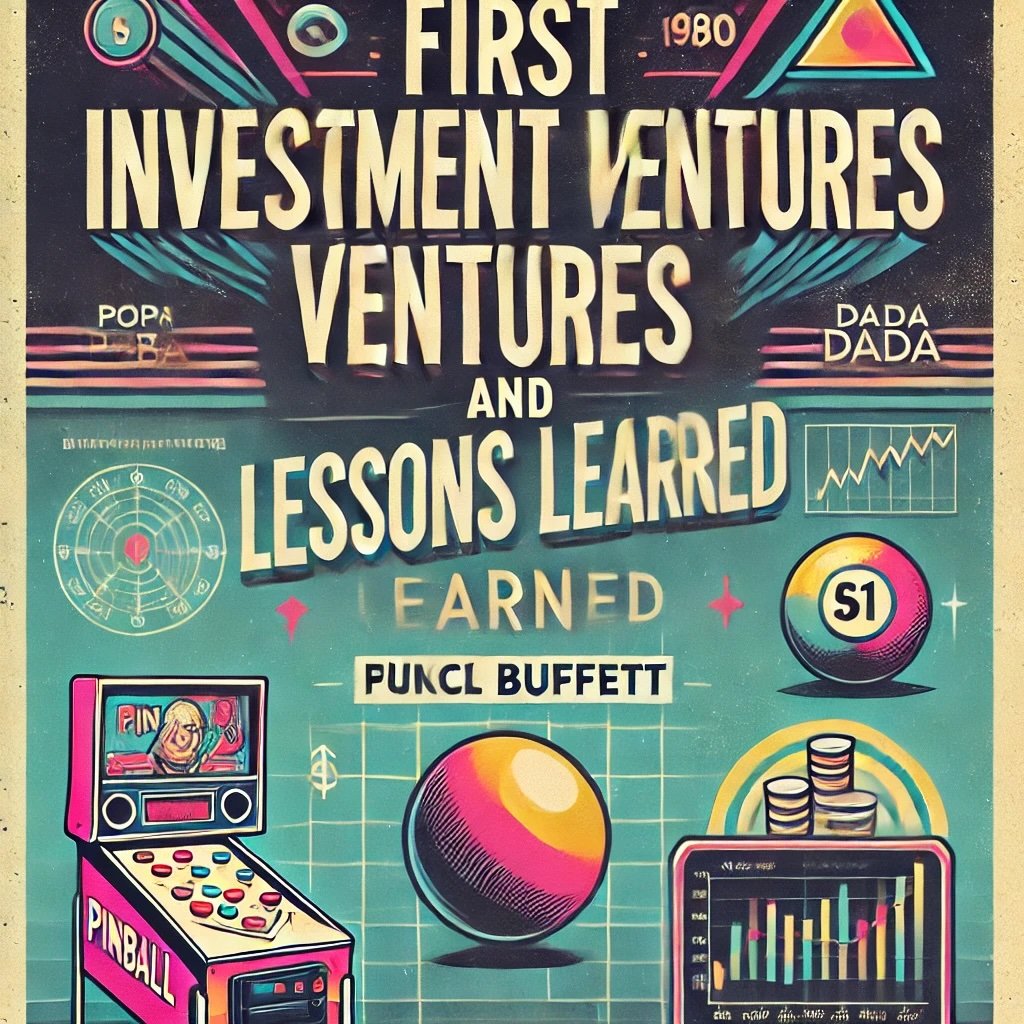
First Investment Ventures and Lessons Learned
After completing his education, Buffett returned to Omaha and began his career in earnest. One of his early ventures involved purchasing a pinball machine with a friend, which they placed in a local barbershop. The profits from this machine allowed them to buy more machines, expanding their small enterprise to multiple locations. Although he eventually sold the business, it was a valuable lesson in investment and scalability.
In 1956, at just 26 years old, he founded Buffett Partnership Ltd. with $100 of his own money and funds from family and friends. The partnership employed the value investing principles he had learned, focusing on long-term growth and investing in undervalued companies. Over the next decade, the partnership’s assets grew from $105,000 to over $100 million. These early successes solidified Buffett’s reputation as a savvy investor and set the stage for his acquisition of Berkshire Hathaway.
- Buffett Partnership Ltd.: His first investment firm, yielding significant returns for partners.
- Early Stock Investments: Applied value investing to achieve substantial growth.
- Business Ventures: Learned from various enterprises, refining his investment strategies.
Tip: Don’t be afraid to start small and learn from each venture; early experiences are invaluable for long-term success.
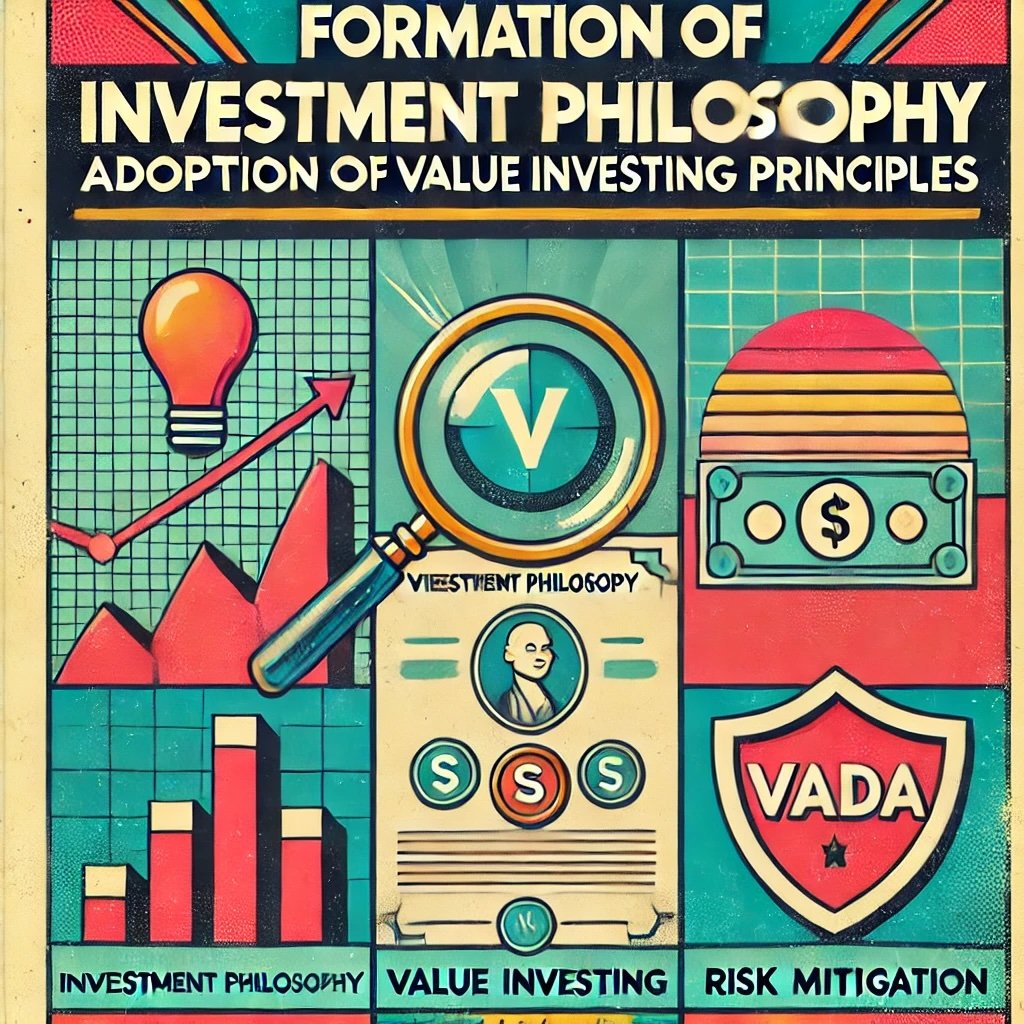
Formation of Investment Philosophy
Adoption of Value Investing Principles
Warren Buffett’s investment philosophy is deeply rooted in the principles of value investing. This approach emphasizes buying undervalued stocks that boast strong fundamentals, such as solid earnings, dividends, and growth potential. Instead of chasing market trends or speculative opportunities, Buffett focuses on companies whose intrinsic value exceeds their current market price. His commitment to this strategy allows him to purchase quality businesses at a discount, setting the stage for substantial long-term gains. By seeking out these hidden gems, he minimizes risk while maximizing potential returns.
- Intrinsic Value Over Market Price: Prioritizing companies worth more than their stock price suggests.
- Strong Fundamentals: Looking for solid earnings, low debt, and consistent growth.
- Risk Mitigation: Reducing exposure by investing in financially sound businesses.
Tip: When evaluating stocks, dig deep into a company’s financial health to determine if it’s truly undervalued.
The influence of Benjamin Graham’s book, “The Intelligent Investor,” cannot be overstated in shaping Buffett’s approach. This seminal work introduced him to the concept of value investing and the importance of thorough financial analysis. Graham’s teachings emphasized patience, discipline, and a long-term perspective—qualities that Buffett adopted wholeheartedly. He often refers to the book as “the best book on investing ever written,” highlighting its impact on his career. By internalizing Graham’s wisdom, Buffett developed a framework that would guide his investment decisions for decades.
- Foundational Reading: “The Intelligent Investor” served as his investment bible.
- Core Concepts: Embraced ideas like margin of safety and intrinsic value.
- Mentorship: Graham’s philosophies became the bedrock of Buffett’s strategies.
Tip: Consider reading “The Intelligent Investor” to gain insight into the fundamentals of value investing.
![]()
Development of the Circle of Competence Concept
Buffett introduced the idea of the circle of competence, emphasizing the importance of investing in areas you thoroughly understand. He believes that sticking to industries and businesses within your expertise increases the likelihood of making informed, successful investments. By focusing on familiar sectors, he can more accurately assess a company’s value and future prospects. This approach minimizes uncertainties and reduces the risk associated with venturing into unknown territories. It’s not about the size of the circle but knowing its boundaries.
- Focused Investing: Concentrating on sectors where he has deep knowledge.
- Risk Reduction: Avoiding pitfalls that come with unfamiliar industries.
- Informed Decisions: Leveraging expertise to evaluate companies effectively.
Tip: Define your own circle of competence and resist the urge to invest outside of it, even if others are doing so.
Avoiding investments outside his expertise is a deliberate strategy Buffett employs to minimize risk. He acknowledges that it’s impossible to understand every industry thoroughly, so he doesn’t try. By saying “no” to opportunities that fall outside his circle, he preserves capital and mental energy for investments he can confidently evaluate. This disciplined approach prevents costly mistakes and keeps his portfolio aligned with his strengths. It’s a testament to the power of specialization in achieving investment success.
- Saying No: Turning down investments that don’t fit his criteria.
- Discipline: Staying committed to his defined areas of expertise.
- Strength Alignment: Playing to his strengths for better outcomes.
Tip: It’s okay to pass on investment opportunities that you don’t fully grasp; sometimes, the best decision is the one not made.
The Role of Patience and Long-Term Thinking
For Buffett, patience isn’t just a virtue—it’s a strategic asset. He prefers long-term gains over short-term profits, often holding investments for decades. This long-term thinking allows him to ride out market volatility and benefit from the sustained growth of quality companies. By not getting swayed by short-term market fluctuations, he stays focused on the bigger picture. His patience enables him to capitalize on compound interest, turning modest gains into substantial wealth over time.
- Long-Term Horizons: Holding investments long enough to realize full value.
- Market Immunity: Less affected by short-term market swings.
- Strategic Patience: Waiting for the right opportunities and outcomes.
Tip: Adopt a long-term perspective in investing to harness the full potential of compound growth.
The impact of compound interest over time is a cornerstone of Buffett’s wealth accumulation strategy. By reinvesting earnings and allowing interest to build upon interest, he exponentially increases his returns. This concept is often referred to as the “eighth wonder of the world,” and Buffett leverages it masterfully. The magic of compounding transforms consistent, modest returns into significant wealth given enough time. It’s a simple yet powerful tool that underpins his long-term investment approach.
- Reinvestment: Plowing earnings back into investments for growth.
- Exponential Growth: Returns accelerate as interest compounds.
- Time Factor: The longer the investment horizon, the greater the impact.
Tip: Start investing early and consistently to maximize the benefits of compound interest over your investing lifetime.

Building Berkshire Hathaway
Acquisition and Transformation
Warren Buffett’s journey with Berkshire Hathaway began in the early 1960s when he started buying shares of the struggling textile company. Initially, his interest was purely investment-driven, aiming to profit from the company’s undervalued stock. By 1965, he had acquired enough shares to take control of the company. Recognizing that the textile industry was in decline, Buffett made the strategic decision to transition Berkshire Hathaway into a holding conglomerate. He began reallocating the company’s capital into more profitable ventures, essentially using it as a vehicle for his investments.
This transformation was a turning point. Instead of focusing on textiles, Berkshire Hathaway started investing in insurance companies, which provided a steady cash flow for further investments. Buffett’s foresight turned a failing business into one of the most successful conglomerates in history. He maintained the Berkshire Hathaway name, turning it into a brand synonymous with smart investing and financial stability.
- Strategic Shift: Moved from textiles to a diversified holding company.
- Capital Allocation: Used profits from initial businesses to fund new investments.
- Brand Preservation: Kept the Berkshire Hathaway name as a testament to transformation.
Tip: Don’t be afraid to pivot your business strategy when industry conditions change; adaptability can lead to new opportunities.
![]()
Key Investments and Business Acquisitions
Under Buffett’s leadership, Berkshire Hathaway made several notable investments in iconic companies. In 1988, he began buying shares of Coca-Cola, eventually acquiring a significant stake. He was drawn to Coca-Cola’s strong brand, global reach, and consistent earnings—hallmarks of a company with a durable competitive advantage. Similarly, he invested in American Express during a time of crisis, recognizing the company’s intrinsic value despite short-term setbacks.
Perhaps one of the most surprising investments was in Apple Inc. Despite his historical aversion to tech stocks, Buffett saw Apple not just as a technology company but as a consumer products leader with a loyal customer base. This investment showcased his ability to adapt his strategies when presented with compelling opportunities. These key acquisitions contributed significantly to Berkshire Hathaway’s growth and solidified Buffett’s reputation as a master investor.
- Coca-Cola: Invested due to brand strength and global presence.
- American Express: Saw value during market distress.
- Apple Inc.: Adapted strategy for a company with a strong consumer focus.
Tip: Identify companies with sustainable competitive advantages to build a resilient investment portfolio.
Criteria for Selecting Businesses with Durable Competitive Advantages
Buffett’s investment choices are guided by specific criteria centered on finding businesses with durable competitive advantages, or economic moats. He looks for companies with strong brand identity, customer loyalty, and the ability to outperform competitors over the long term. Solid management and ethical business practices are also crucial factors. He avoids businesses in rapidly changing industries where future prospects are uncertain.
By focusing on these criteria, Buffett minimizes risk and positions Berkshire Hathaway for steady growth. His strategy involves thorough research and a deep understanding of each company’s fundamentals before investing substantial capital. This disciplined approach ensures that each addition to the portfolio strengthens the overall performance of Berkshire Hathaway.
- Strong Brands: Companies recognizable and trusted by consumers.
- Consistent Earnings: Businesses with a history of profitability.
- Effective Management: Leadership that aligns with shareholder interests.
Tip: Develop a checklist of criteria for investments to maintain consistency and objectivity in your decision-making process.
Partnership with Charlie Munger
A significant factor in Buffett’s success is his long-standing partnership with Charlie Munger. The two met in 1959 and quickly formed a mutual respect and friendship. Munger, a former lawyer turned investor, joined Berkshire Hathaway as Vice Chairman. Together, they engage in collaborative decision-making and strategy development, often challenging each other’s ideas to refine their investment approaches. Their partnership is built on trust, intellectual rigor, and a shared investment philosophy.
Munger’s influence on Buffett cannot be overstated. He encouraged Buffett to shift his focus from merely buying undervalued companies to investing in quality businesses at fair prices. This change led to more significant investments in strong companies with excellent long-term prospects. Munger’s emphasis on the importance of company quality helped refine Berkshire Hathaway’s investment strategy.
- Intellectual Partnership: Mutual challenge and support in decision-making.
- Shift in Strategy: From undervalued stocks to quality businesses.
- Shared Philosophy: Alignment in long-term investment goals.
Tip: Surround yourself with trusted advisors who challenge you to think differently and improve your strategies.
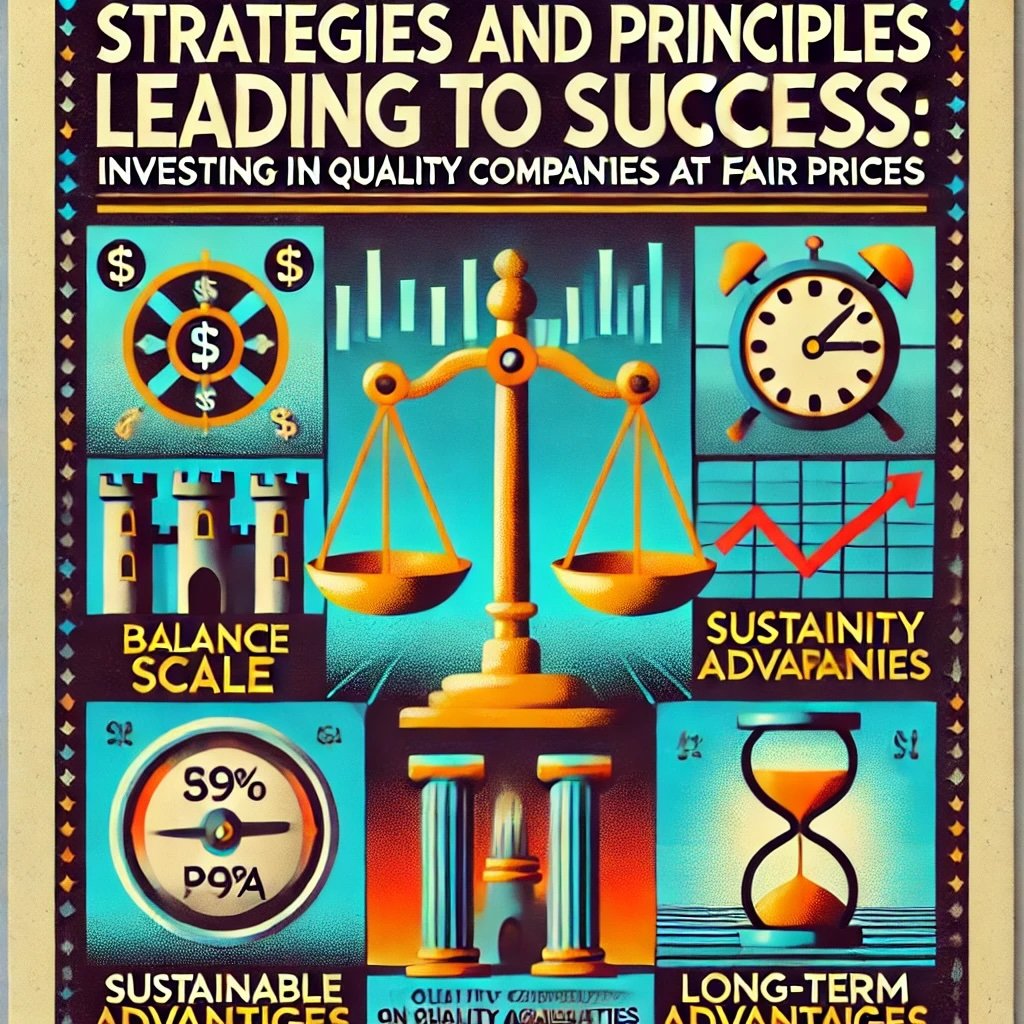
Strategies and Principles Leading to Success
Investing in Quality Companies at Fair Prices
One of Warren Buffett’s cornerstone strategies is investing in quality companies even if they come at fair prices rather than bargain basement deals. He believes that it’s better to buy a great company at a fair price than a fair company at a great price. This means prioritizing businesses with strong fundamentals, reliable earnings, and sustainable competitive advantages. Buffett looks for companies that have solid track records and promising futures, even if they aren’t the cheapest options on the market. By focusing on quality, he ensures that his investments can stand the test of time and economic fluctuations.
- Quality over Cheapness: Prefers paying a fair price for exceptional businesses.
- Sustainable Advantages: Seeks companies with lasting competitive edges.
- Long-Term Viability: Invests in businesses poised for enduring success.
Tip: When evaluating investments, consider the company’s long-term potential rather than just its current stock price.
The importance of strong management and ethical practices cannot be overstated in Buffett’s investment criteria. He places immense value on leadership teams that are competent, honest, and shareholder-friendly. Ethical practices ensure that the company operates with integrity, which is crucial for long-term success and reputation. Buffett often says he’d rather invest in a company with a great manager running an average business than an average manager running a great business. Trustworthy management can navigate challenges effectively and capitalize on opportunities, enhancing the company’s value over time.
- Integrity Matters: Ethical leadership builds trust with investors and customers.
- Competent Management: Skilled leaders drive strategic growth and efficiency.
- Shareholder Alignment: Managers who think like owners make decisions that benefit investors.
Tip: Research a company’s leadership team and corporate governance to assess management quality before investing.
Reinvestment of Earnings and Compounding Growth
Buffett is a firm believer in the reinvestment of earnings to fuel growth. Instead of distributing all profits as dividends, he prefers companies that reinvest a significant portion back into the business. This strategy supports expansion, innovation, and increased market share. By plowing profits back into operations, companies can generate higher returns over the long term. This approach not only boosts the company’s value but also enhances shareholder wealth as the company’s stock price appreciates.
- Growth Investment: Reinvested earnings fund new projects and opportunities.
- Increased Value: Enhances the company’s intrinsic worth over time.
- Shareholder Benefits: Leads to stock appreciation, benefiting investors.
Tip: Look for companies with a history of smart reinvestment strategies that have led to consistent growth.
The power of compound interest in wealth accumulation is a fundamental principle in Buffett’s investment philosophy. Compounding occurs when earnings generate additional earnings over time, creating an exponential growth effect. Buffett often refers to compounding as the “eighth wonder of the world”. By holding investments for extended periods, he allows the effects of compounding to magnify his returns significantly. This strategy underscores the importance of patience and long-term commitment in investing.
- Exponential Growth: Earnings on earnings accelerate wealth accumulation.
- Time Factor: The longer the investment horizon, the greater the compounding effect.
- Passive Gains: Wealth grows without additional capital investment.
Tip: Start investing early and stay invested to maximize the benefits of compound interest over time.
![]()
Contrarian Investing and Market Psychology
Buffett is famous for his contrarian investing approach, which involves buying when others are fearful and selling when others are greedy. He capitalizes on market overreactions that can undervalue strong companies during downturns. This strategy allows him to purchase quality stocks at discounted prices. By going against the crowd, he avoids the pitfalls of herd mentality and makes decisions based on careful analysis rather than emotions. This approach requires confidence and a deep understanding of market psychology.
- Market Inefficiencies: Exploits mispricings caused by investor emotions.
- Value Opportunities: Identifies undervalued stocks during market dips.
- Emotional Discipline: Avoids panic selling and euphoric buying.
Tip: Develop the discipline to make investment decisions based on logic and analysis, not market hype or fear.
Examples of successful investments during market downturns highlight Buffett’s effective use of contrarian strategies. For instance, during the 2008 financial crisis, he invested heavily in companies like Goldman Sachs and General Electric when their stock prices plummeted. These investments paid off handsomely as the market recovered. Similarly, his purchase of American Express stock during the Salad Oil Scandal of the 1960s turned out to be a lucrative decision. These examples demonstrate how buying undervalued quality companies during tough times can lead to substantial gains.
- 2008 Crisis Investments: Profited from buying strong companies in distressed times.
- American Express: Invested during a scandal when others were selling.
- Long-Term Rewards: Realized significant returns as companies rebounded.
Tip: Keep an eye on fundamentally strong companies during market downturns—they may offer attractive investment opportunities.
Maintaining Financial Discipline and Patience
Avoiding unnecessary risks and debt is a key aspect of Buffett’s financial discipline. He prefers companies with strong balance sheets and manageable debt levels. High debt can be risky, especially during economic downturns when earnings may decline. By investing in financially sound companies, Buffett minimizes the risk of insolvency and financial distress. This cautious approach extends to his personal and corporate investment strategies, where he avoids overleveraging and speculative ventures.
- Strong Balance Sheets: Chooses companies with solid financial foundations.
- Risk Management: Mitigates potential losses by avoiding high-debt entities.
- Sustainable Growth: Focuses on steady, manageable expansion.
Tip: Assess a company’s debt levels and financial health before investing to ensure long-term stability.
Staying committed to his investment principles over time has been a cornerstone of Buffett’s success. He doesn’t sway with market fads or short-term trends. Instead, he sticks to his well-defined investment criteria and strategies, even when they’re unpopular. This unwavering commitment requires patience, as some investments take years to realize their full potential. Buffett’s consistency demonstrates that disciplined investing can yield substantial rewards over the long haul.
- Consistency: Adheres to his investment philosophy regardless of market conditions.
- Long-Term Focus: Prioritizes future potential over immediate gratification.
- Resilience: Maintains course despite external pressures or criticisms.
Tip: Define your investment principles clearly and stay true to them to build a cohesive and effective investment strategy.

Legacy and Impact: Philanthropy and The Giving Pledge
Warren Buffett’s legacy extends far beyond his investment prowess; it also encompasses his profound commitment to philanthropy. He has pledged to give away the majority of his wealth to charitable causes, believing that immense fortunes should benefit society at large. In 2010, Buffett co-founded The Giving Pledge alongside Bill and Melinda Gates, encouraging billionaires to commit at least half of their wealth to philanthropy. This initiative isn’t just about donating money; it’s about inspiring others to use their resources to address some of the world’s most pressing problems. Buffett’s philanthropic efforts highlight his belief in the importance of giving back and making a positive impact on humanity.
- The Giving Pledge: An initiative urging billionaires to donate at least 50% of their wealth.
- Collaboration with Gates Foundation: Supports global health, education, and poverty alleviation programs.
- Philanthropic Philosophy: Emphasizes responsible stewardship of wealth for societal benefit.
Tip: Consider how your resources—time, money, or skills—can contribute to causes you’re passionate about, no matter the scale.
Influence on Modern Investing Practices
Buffett has significantly influenced modern investing practices, popularizing the principles of value investing and long-term strategies. His success has demonstrated that focusing on a company’s intrinsic value and holding investments for the long haul can yield substantial returns. By sharing his insights through annual shareholder letters and public appearances, he has mentored and inspired a new generation of investors. Many now adopt his techniques, prioritizing fundamental analysis over speculative trading. His emphasis on ethical investing and corporate responsibility has also shaped how investors assess potential opportunities.
- Value Investing Advocate: Promoted investing based on a company’s true worth.
- Educational Impact: His writings and talks serve as valuable resources for learning.
- Ethical Standards: Encourages transparency and integrity in business practices.
Tip: Embrace continuous learning from seasoned investors to refine your own investment approach and philosophy.
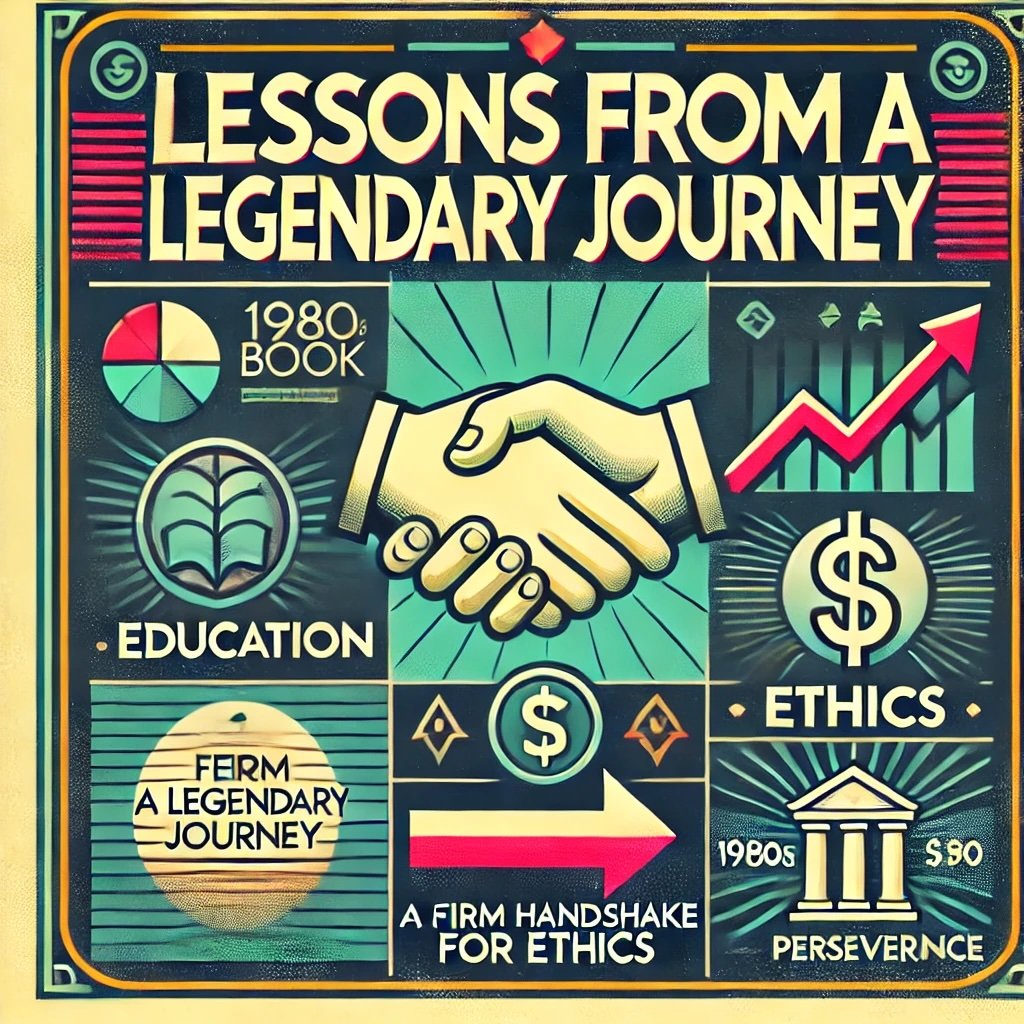
Lessons from Warren Buffett’s Journey
Warren Buffett’s journey offers numerous key takeaways for personal and professional development. One of the most profound lessons is the importance of ethics; conducting business with integrity builds trust and long-term success. His commitment to education underscores the value of knowledge in making informed decisions. Buffett’s perseverance through market ups and downs highlights the necessity of resilience in the face of challenges. These principles extend beyond investing—they’re applicable to various aspects of life and career.
- Integrity Matters: Ethical conduct fosters credibility and lasting relationships.
- Lifelong Learning: Continuous education fuels personal growth and opportunity.
- Perseverance Pays Off: Staying the course leads to long-term achievements.
Tip: Integrate these core values into your daily life to cultivate a foundation for sustained success and fulfillment.
Conclusion: The Factors Behind His Wealth
Summing up, Warren Buffett’s immense success is a result of his unwavering investment philosophy, disciplined approach, and commitment to ethical practices. His focus on value investing, patience, and understanding of market psychology enabled him to build one of the world’s most substantial fortunes. Beyond wealth accumulation, his dedication to philanthropy and positive societal impact amplifies his legacy. Buffett’s journey illustrates that success is not just about financial acumen but also about character, continuous learning, and giving back.
- Holistic Success: Combines financial achievements with social responsibility.
- Model for Investors: His strategies offer a blueprint for aspiring investors.
- Inspiration: Demonstrates how principled approaches can lead to extraordinary results.
Tip: Apply these principles in your own life by investing wisely, acting ethically, and striving to make a positive difference in the world.
How Warren Buffett Became One of the World’s Richest Investors — 12-Question FAQ
How did Warren Buffett actually make most of his wealth?
Primarily through decades of compounding inside Berkshire Hathaway. He bought whole businesses and large stakes in high-quality public companies, funded by durable operating cash flows and insurance “float.” By keeping a long time horizon and avoiding permanent losses, the compounding did the heavy lifting.
What early experiences shaped Buffett’s investor mindset?
Childhood micro-businesses (paper routes, Coca-Cola resales, pinball machines) taught him unit economics, float (collecting before paying), and reinvestment. Those lessons—measure cash in/cash out, scale what works, and keep costs low—foreshadowed his later capital allocation playbook.
What is insurance “float,” and why did it matter so much?
Float is policyholders’ money Berkshire holds between collecting premiums and paying future claims. If underwriting breaks even (or better), that float behaves like low-cost (sometimes better-than-free) capital to invest in stocks and businesses. Cheap, reliable funding amplified Berkshire’s compounding engine.
How did Charlie Munger change Buffett’s strategy?
Munger nudged Buffett from “cigar-butt” bargains to buying wonderful businesses at fair prices. That shift prioritized moats, high returns on capital, and great managers—reducing turnover and magnifying compounding. It’s quality over mere cheapness.
Why buy a failing textile mill (Berkshire) and keep the name?
Berkshire began as an undervalued special situation. After taking control, Buffett redirected cash flows into better businesses (insurance, then a diversified set of subsidiaries). The name became a trusted brand for rational capital allocation and owner-orientation.
What checklist does Buffett use when choosing investments?
He focuses on: (1) understandable business within his circle of competence, (2) durable competitive advantages (brand, cost, network, switching costs), (3) high and persistent ROIC, (4) candid, shareholder-aligned management, and (5) a price that embeds a margin of safety.
When does Buffett sell?
Rarely. He trims or exits when the thesis breaks (moat erodes, management integrity falters), superior opportunities arise with materially better expected returns, or valuation becomes extreme relative to long-run prospects. Taxes and friction costs make “do nothing” a powerful default.
How important were patience and frugality to the outcome?
Essential. Patience allowed compounding to work through cycles; frugality kept personal and corporate overhead low, protecting the compounding base. Time in market, not timing the market, is the decisive edge when the businesses are truly exceptional.
What can ordinary investors realistically copy—and what can’t?
You can copy: long horizons, quality bias, checklists, margin of safety, and continuous learning. Harder to copy: access to exceptional deals, permanent capital, and float. But you don’t need those to benefit from owning great businesses (or low-cost index funds) patiently.
How do philanthropy and The Giving Pledge fit into his legacy?
Buffett plans to give away virtually all of his fortune, helping normalize large-scale philanthropy among billionaires. His letters also model ethical business conduct—candor, accountability, and fair dealing—which many investors now expect from leaders.
Where should a beginner start learning the Buffett way?
Read “The Intelligent Investor” (Graham) for foundations, Buffett’s annual Berkshire letters for applied wisdom, and “Common Stocks and Uncommon Profits” (Fisher) for scuttlebutt and quality focus. Take notes; build your own one-page thesis template from these sources.
How can I apply Buffett’s principles this year?
Map your circle of competence; screen for high-ROIC, low-debt firms; estimate conservative intrinsic value ranges; demand a margin of safety; buy in tranches; review annually like an owner; and reinvest dividends/earnings systematically. Keep a mistakes journal to sharpen judgment.
Important Information
Comprehensive Investment Disclaimer:
All content provided on this website (including but not limited to portfolio ideas, fund analyses, investment strategies, commentary on market conditions, and discussions regarding leverage) is strictly for educational, informational, and illustrative purposes only. The information does not constitute financial, investment, tax, accounting, or legal advice. Opinions, strategies, and ideas presented herein represent personal perspectives, are based on independent research and publicly available information, and do not necessarily reflect the views or official positions of any third-party organizations, institutions, or affiliates.
Investing in financial markets inherently carries substantial risks, including but not limited to market volatility, economic uncertainties, geopolitical developments, and liquidity risks. You must be fully aware that there is always the potential for partial or total loss of your principal investment. Additionally, the use of leverage or leveraged financial products significantly increases risk exposure by amplifying both potential gains and potential losses, and thus is not appropriate or advisable for all investors. Using leverage may result in losing more than your initial invested capital, incurring margin calls, experiencing substantial interest costs, or suffering severe financial distress.
Past performance indicators, including historical data, backtesting results, and hypothetical scenarios, should never be viewed as guarantees or reliable predictions of future performance. Any examples provided are purely hypothetical and intended only for illustration purposes. Performance benchmarks, such as market indexes mentioned on this site, are theoretical and are not directly investable. While diligent efforts are made to provide accurate and current information, “Picture Perfect Portfolios” does not warrant, represent, or guarantee the accuracy, completeness, or timeliness of any information provided. Errors, inaccuracies, or outdated information may exist.
Users of this website are strongly encouraged to independently verify all information, conduct comprehensive research and due diligence, and engage with qualified financial, investment, tax, or legal professionals before making any investment or financial decisions. The responsibility for making informed investment decisions rests entirely with the individual. “Picture Perfect Portfolios” explicitly disclaims all liability for any direct, indirect, incidental, special, consequential, or other losses or damages incurred, financial or otherwise, arising out of reliance upon, or use of, any content or information presented on this website.
By accessing, reading, and utilizing the content on this website, you expressly acknowledge, understand, accept, and agree to abide by these terms and conditions. Please consult the full and detailed disclaimer available elsewhere on this website for further clarification and additional important disclosures. Read the complete disclaimer here.




